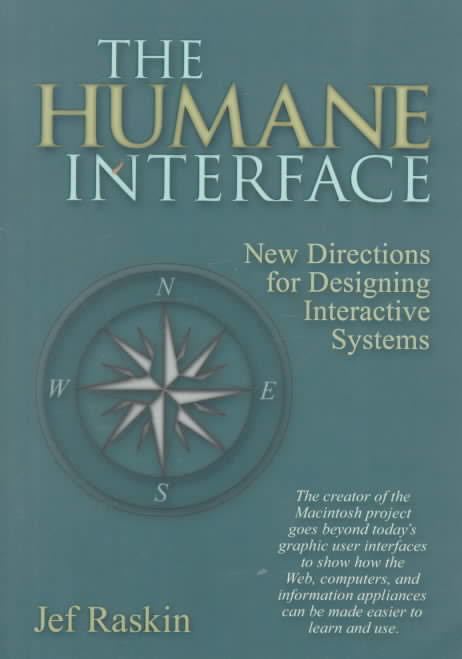8 /10 1 Votes8
Language English Publication date 2000 Dewey Decimal 004/.01/9 21 Originally published 2000 Genre Computer Science OCLC 43286483 | 4/5 Goodreads Publisher Addison Wesley ISBN 0-201-37937-6 LC Class QA76.9.H85 R37 2000 Country United States of America | |||||||||||||||||||||||||||||||||
 | ||||||||||||||||||||||||||||||||||
User interface books Designing for Effective Human/C, Designing Interfaces, GUI bloopers, Sketching User Experien, Designing Visual Interfaces | ||||||||||||||||||||||||||||||||||
The Humane Interface: New Directions for Designing Interactive Systems (ISBN 0-201-37937-6) is a book about user interface design written by Jef Raskin and published in 2000. It covers ergonomics, quantification, evaluation, and navigation.
Contents
Contents
The book puts forward a large number of interface design suggestions, from fairly trivial ones to radical ones. The overriding theme is that current computer interfaces are often poor and set up users to fail, as a result of poor planning (or lack of planning) by programmers and a lack of understanding of how people actually use software.
Raskin often refers to the computer he designed, the Canon Cat, as an example of a system that implemented the various measures he advocates; the Canon Cat is often considered the first information appliance. Many of the ideas presented in the Canon Cat and The Humane Interface were later adopted by Raskin in his Archy project, and later by his son Aza.
Raskin includes a chapter demonstrating four models of quantifying the efficiency of a software interface: the GOMS keystroke model, Raskin's own efficiency measure, Fitts' law and Hick's law. All are intended to minimize the amount of time required for the user to perform any specific task.
Design rules
Raskin also advocates a number of changes to conventional interface design. Among them:
Habituation is an important concept driving Raskin's guidelines, intended to free the user's mind from attention to low-level interaction details. A modeless interface, monotony of design and elimination of blocking warnings are all intended to favor habit-forming reactions to interface handling.
Non-standard interaction architecture
Raskin also advocates a document-centered approach to computer interfaces that entails several radical changes to the current nature of operating systems and software:
Raskin further asserts that interface design should be subject to regulation, analogous to building codes. This could be done by establishing legal safeguards to protect consumers from harm; and establishing professional guidelines and standards to evaluate good practice and interface quality.
